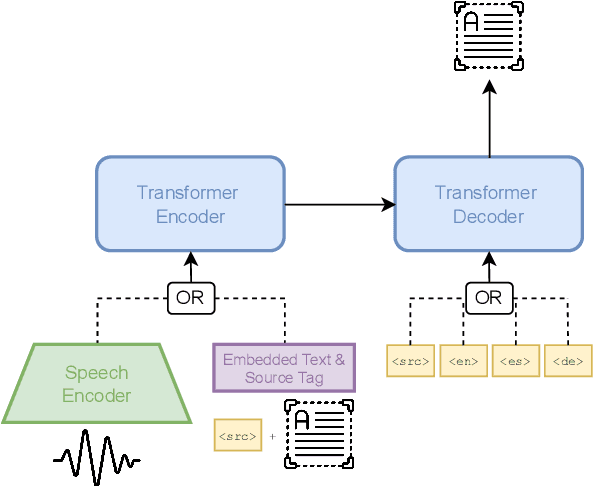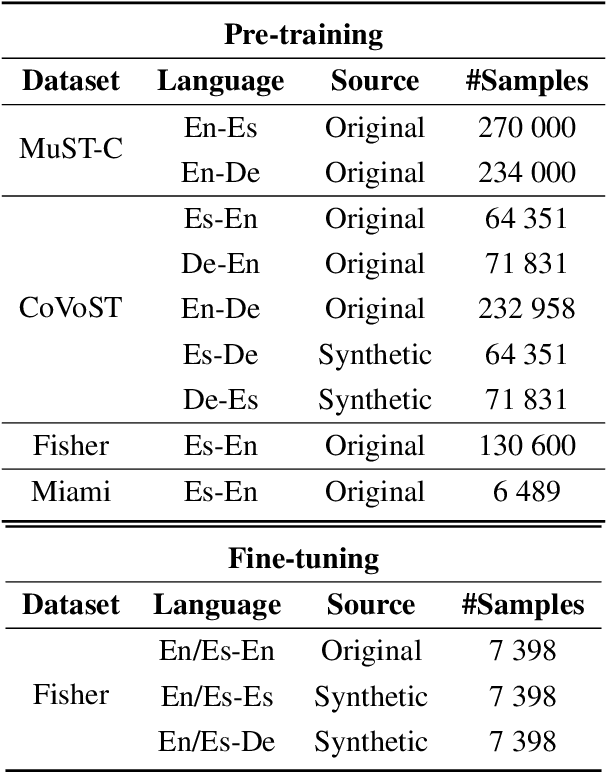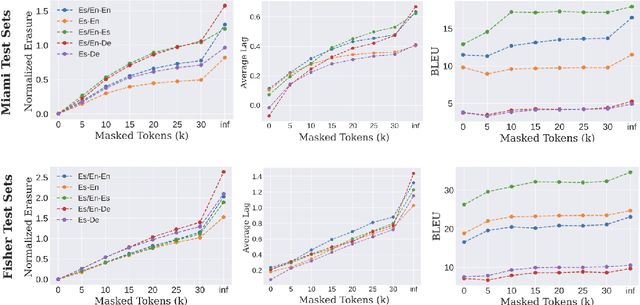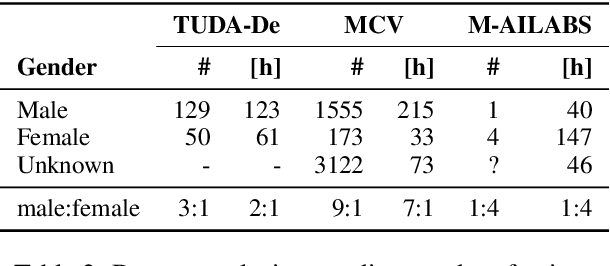Aashish Agarwal
Towards Real-World Streaming Speech Translation for Code-Switched Speech
Oct 23, 2023



Abstract:Code-switching (CS), i.e. mixing different languages in a single sentence, is a common phenomenon in communication and can be challenging in many Natural Language Processing (NLP) settings. Previous studies on CS speech have shown promising results for end-to-end speech translation (ST), but have been limited to offline scenarios and to translation to one of the languages present in the source (\textit{monolingual transcription}). In this paper, we focus on two essential yet unexplored areas for real-world CS speech translation: streaming settings, and translation to a third language (i.e., a language not included in the source). To this end, we extend the Fisher and Miami test and validation datasets to include new targets in Spanish and German. Using this data, we train a model for both offline and streaming ST and we establish baseline results for the two settings mentioned earlier.
Dialectal Speech Recognition and Translation of Swiss German Speech to Standard German Text: Microsoft's Submission to SwissText 2021
Jul 01, 2021

Abstract:This paper describes the winning approach in the Shared Task 3 at SwissText 2021 on Swiss German Speech to Standard German Text, a public competition on dialect recognition and translation. Swiss German refers to the multitude of Alemannic dialects spoken in the German-speaking parts of Switzerland. Swiss German differs significantly from standard German in pronunciation, word inventory and grammar. It is mostly incomprehensible to native German speakers. Moreover, it lacks a standardized written script. To solve the challenging task, we propose a hybrid automatic speech recognition system with a lexicon that incorporates translations, a 1st pass language model that deals with Swiss German particularities, a transfer-learned acoustic model and a strong neural language model for 2nd pass rescoring. Our submission reaches 46.04% BLEU on a blind conversational test set and outperforms the second best competitor by a 12% relative margin.
Robustness of end-to-end Automatic Speech Recognition Models -- A Case Study using Mozilla DeepSpeech
May 08, 2021



Abstract:When evaluating the performance of automatic speech recognition models, usually word error rate within a certain dataset is used. Special care must be taken in understanding the dataset in order to report realistic performance numbers. We argue that many performance numbers reported probably underestimate the expected error rate. We conduct experiments controlling for selection bias, gender as well as overlap (between training and test data) in content, voices, and recording conditions. We find that content overlap has the biggest impact, but other factors like gender also play a role.
 Add to Chrome
Add to Chrome Add to Firefox
Add to Firefox Add to Edge
Add to Edge